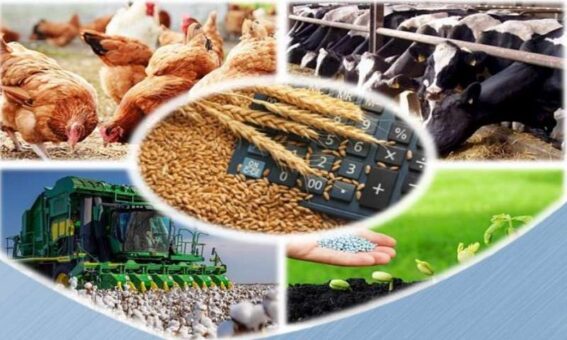PkRevenue.com – In a robust review of the proposed annual plan for the fiscal year 2024-25, the Annual Plan Coordination Committee (APCC) painted a positive economic picture for Pakistan.
With a growth target of 3.6%, the country’s economic prospects are anticipated to hinge on political stability, favorable exchange rates, and macroeconomic stabilization under the ongoing International Monetary Fund (IMF) programme. An expected decline in global oil and commodity prices further bolsters this optimistic outlook.
According to the Planning Commission’s document, the agriculture sector is projected to grow by 2% in 2024-25. This moderate growth rate takes into account the high base effect from previous bumper yields. The industrial sector is set for a rebound, targeting a growth of 4.4%, driven primarily by a 3.5% increase in Large Scale Manufacturing (LSM). Improved inputs and energy supplies, supported by falling global oil prices, are expected to provide a significant boost to industrial activities.
The services sector, a vital component of Pakistan’s economy, is forecasted to grow by 4.1%. This growth will be supported by an expected 3.1% rise in commodity-producing sectors, reflecting a comprehensive recovery across various economic segments.
The document highlights an anticipated increase in the investment-to-GDP ratio, projected to rise from 13.1% in 2023-24 to 14.2% in 2024-25. This uptick is attributed to expected economic improvements, a better business environment, and political stability. National savings are targeted at 13.3% of GDP, indicating a more robust economic framework.
Fiscal discipline is also a key focus, with the fiscal deficit expected to narrow due to fiscal consolidation measures. Domestic inflation is forecasted to moderate to 12%, aligning with global inflation trends. This projected decrease in inflation is a welcome relief after the high inflation rates experienced in the previous fiscal years.
Review of Fiscal Year 2023-24: Overcoming Challenges
The APCC also reviewed the annual plan for the fiscal year 2023-24, noting significant economic challenges at the start of the year. Despite these hurdles, the economy managed a moderate recovery, achieving a growth rate of 2.4%.
The agriculture sector was the primary driver of this growth, posting a remarkable 6.3% increase due to bumper outputs of key crops such as wheat, cotton, and rice. This sector’s performance underscored its resilience and pivotal role in the country’s economic recovery.
The industrial sector, however, experienced a more modest growth of 1.2%, largely due to a slowdown in large-scale manufacturing activities. Nonetheless, there were positive developments in mining and quarrying, small-scale manufacturing, and construction, indicating a diverse industrial recovery.
The services sector also registered a 1.2% growth, albeit with varied performance across its sub-sectors. Wholesale and retail trade saw a minimal growth of 0.3%, while transport, storage, and communications recorded a 1.2% growth due to subdued demand.
Revenue and Inflation Trends
Total revenue collection saw a significant surge of 41% during July-March 2023-24, outpacing the 36.6% growth in total expenditure. This increase was driven by a 29.3% rise in tax revenues and an impressive 89.8% growth in non-tax revenues. Markup expenditure, which constituted 40% of total expenditure, remained a significant component of fiscal dynamics.
Average inflation during July-April 2023-24 was recorded at 26%, a slight improvement from 28.2% in the same period of the previous year. A continuous decline in inflation has been observed since January 2024, providing a positive trend for future economic stability.
External Sector Developments
The external sector faced substantial challenges at the beginning of 2023-24. However, through effective measures by the government and the State Bank of Pakistan (SBP), the current account deficit narrowed, and foreign exchange reserves improved. Inflows from the IMF and other foreign donors played a crucial role in stabilizing the exchange rate and enhancing the country’s economic resilience.
As Pakistan looks ahead to the fiscal year 2024-25, the government’s focus on maintaining political stability, ensuring favorable exchange rates, and adhering to the IMF’s macroeconomic stabilization programme is expected to foster a conducive environment for sustained economic growth. The anticipated fall in global oil and commodity prices further strengthens the outlook, paving the way for a promising economic future.
With targeted improvements in agriculture, industry, and services, alongside enhanced investment and savings rates, Pakistan is poised to achieve its growth target of 3.6%, marking a significant step towards economic recovery and stability.
